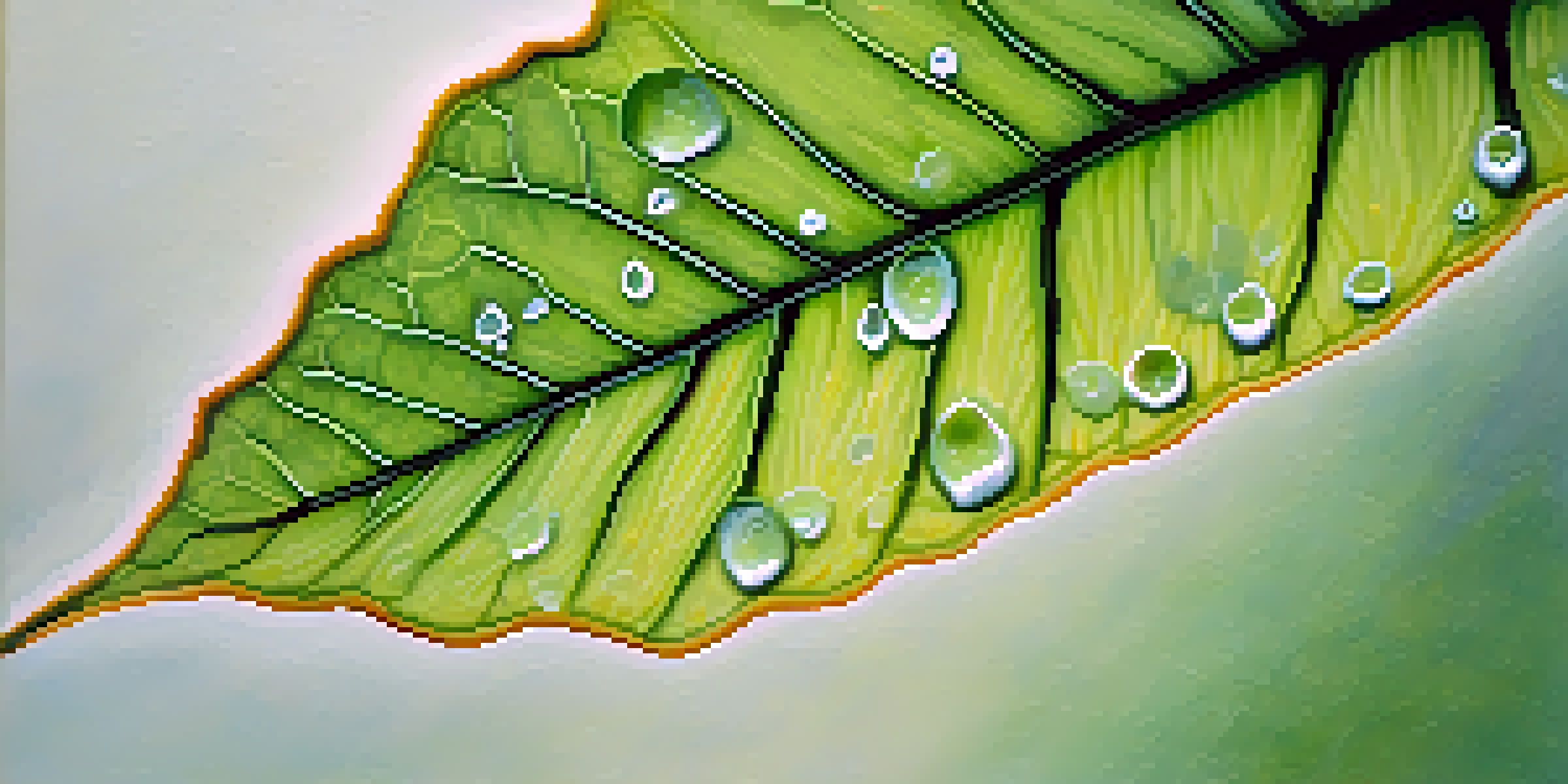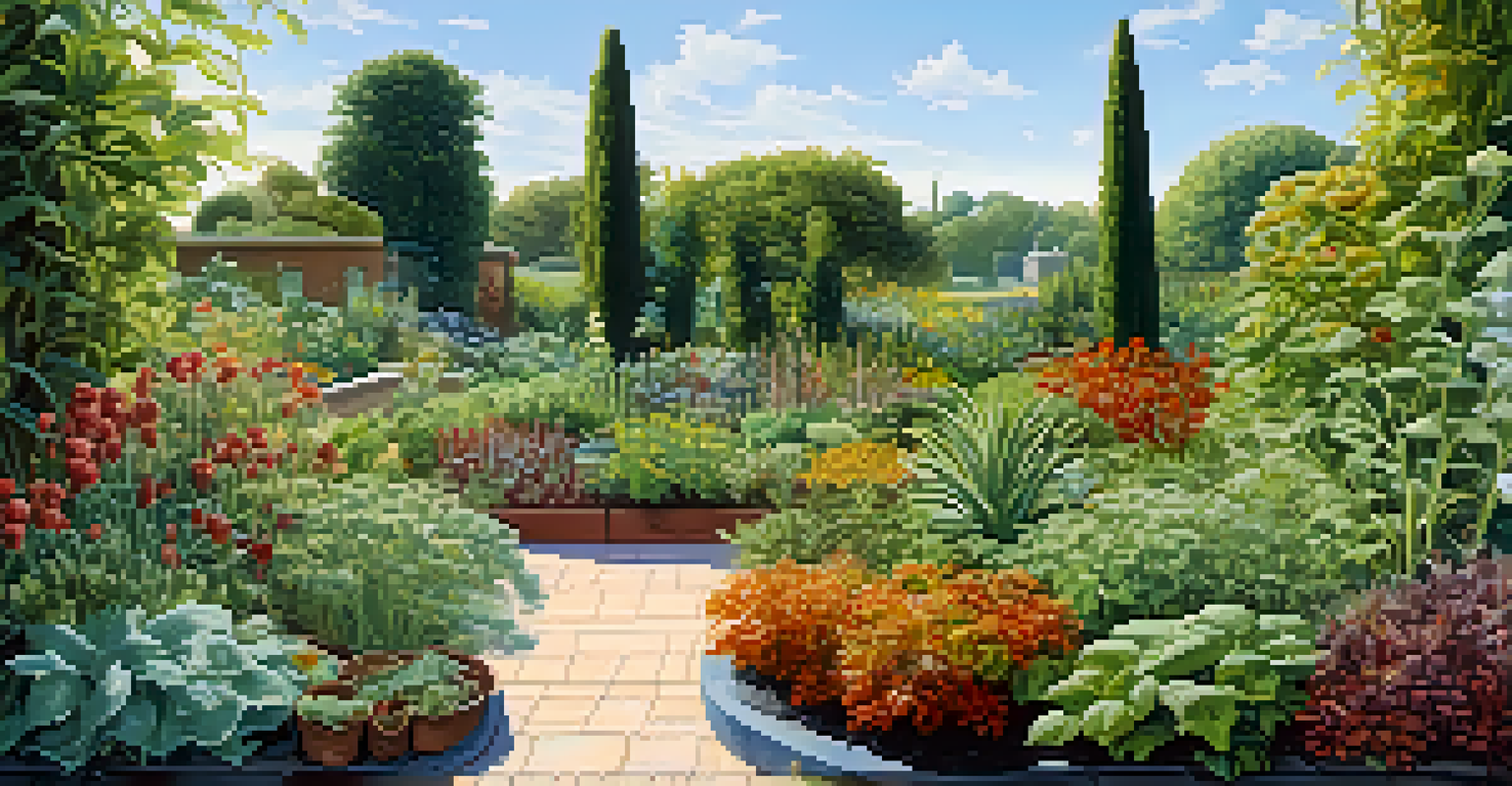Powdery Mildew on Plants: Causes and Home Remedies Explained

What is Powdery Mildew and Its Impact on Plants?
Powdery mildew is a fungal disease characterized by white or grayish powdery spots on plant leaves. This fungus thrives in warm, dry conditions and can affect a variety of plants, including vegetables, flowers, and ornamental shrubs.
An ounce of prevention is worth a pound of cure.
Beyond its unsightly appearance, powdery mildew can weaken plants, stunting their growth and reducing yields. If left untreated, it can lead to more severe health issues for your plants, ultimately affecting their vitality.
Understanding the nature of powdery mildew is crucial for gardeners and plant enthusiasts alike. It’s not just an aesthetic concern; it can impact the overall health of your garden.
Common Causes of Powdery Mildew on Plants
Several factors contribute to the onset of powdery mildew, with poor air circulation being one of the primary culprits. When plants are crowded together, moisture gets trapped, creating an ideal environment for the fungus to thrive.

Additionally, high humidity levels paired with warm temperatures can accelerate the spread of powdery mildew. It’s a classic case of the right conditions leading to a problematic situation, especially in gardens that are not well-maintained.
Understand Powdery Mildew Importance
Recognizing powdery mildew is crucial as it can significantly weaken plants and affect garden health.
Lastly, using nitrogen-rich fertilizers can promote lush, tender growth that is particularly susceptible to this fungus. Keeping an eye on these conditions can help prevent powdery mildew from taking root in your garden.
Identifying Powdery Mildew: Signs to Look For
Identifying powdery mildew early is key to managing its spread. Look for the distinct white or gray powdery spots on the upper side of leaves, which can spread to stems and buds if not addressed promptly.
Gardening is a way of showing that you believe in tomorrow.
As the disease progresses, leaves may turn yellow and become distorted, eventually leading to leaf drop. This can be disheartening for any gardener, but recognizing these signs allows for quicker intervention.
Regularly inspecting your plants, especially during warmer months, can help catch powdery mildew before it becomes a widespread issue. Early detection is your best defense against this pesky fungus.
Effective Home Remedies for Powdery Mildew
One of the simplest home remedies for powdery mildew is a mixture of water and baking soda. Combining one tablespoon of baking soda with a gallon of water creates a spray that can help control fungal growth when applied regularly.
Another effective solution is a mix of water and milk, with a ratio of one part milk to two parts water. Spraying this mixture onto affected plants not only helps combat mildew but also introduces beneficial bacteria that can improve plant health.
Identify Mildew Early for Action
Early detection of powdery mildew through regular inspections can prevent its spread and minimize damage.
Garlic and neem oil are also popular natural remedies. Both have antifungal properties that can deter powdery mildew while being gentle on your plants, making them great options for organic gardening.
Preventative Measures Against Powdery Mildew
Preventing powdery mildew is often easier than treating it. Ensuring adequate spacing between plants improves air circulation, reducing humidity levels that favor fungal growth.
Regularly watering your plants at the base rather than overhead can also help minimize moisture on leaves, making it less hospitable for mildew. Consistency in care is key to a healthy garden.
Additionally, choosing resistant plant varieties can be a game-changer. Many plants are bred to withstand powdery mildew, providing a more resilient option for your garden.
When to Seek Professional Help for Powdery Mildew
Sometimes, despite your best efforts, powdery mildew can become overwhelming. If you notice that home remedies are not effective and the infection is spreading, it may be time to consult a professional.
Pest control experts can provide specialized treatments that may not be available to the average gardener. They can also offer insight into long-term management strategies tailored to your specific garden conditions.
Preventive Steps for Healthy Plants
Implementing preventive measures like proper spacing and watering techniques can help keep powdery mildew at bay.
Recognizing when to seek help is crucial in protecting your plants and ensuring the health of your garden. Sometimes, professional intervention is the best path forward.
Conclusion: Keeping Your Garden Powdery Mildew-Free
Powdery mildew can be a frustrating challenge for gardeners, but understanding its causes and recognizing its signs are your first steps toward effective management. With the right preventative measures and home remedies, you can maintain a healthy, vibrant garden.
Remember, the key to success lies in regular monitoring and prompt action. The sooner you address any signs of powdery mildew, the better your chances of keeping it at bay.

By staying informed and proactive, you can enjoy a flourishing garden free from the troubles of powdery mildew. Happy gardening!